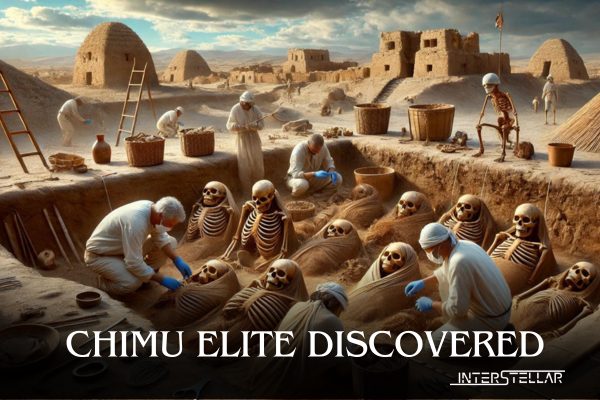Archaeologists Discover Elite Chimu Remains in Peru
Unearthing Chimu History
Archaeologists in Peru have uncovered the remains of eleven individuals believed to be wealthy members of the Chimu civilization. This pre-Inca society thrived for centuries on the arid plains between the Pacific Ocean and the Andes Mountains. The remains, estimated to be around 800 years old, were found adorned with necklaces, earrings, and bracelets.
Findings at Chan Chan
Lead archaeologist Sinthya Cueva reported the discovery in the Chimu capital of Chan Chan, near the modern city of Trujillo. Chan Chan is renowned for its elaborate mud-brick architecture, once one of the largest adobe cities in the world. The adornments found with the remains suggest they were likely members of the Chimu’s governing class, although Cueva did not specify the materials used for the jewelry. Chimu-era jewelry is often crafted from bronze or gold.
Signs of Disturbance
Cueva noted that the remains had been disturbed and showed signs of violent death. The individuals were found in a part of the city not typically used as a cemetery. The discovery was part of an excavation that began in April, aiming to restore the perimeter walls of a palace complex.
The Chimu Civilization
The civilization flourished along the coastal plains of northern Peru from around 800 AD until the 1400s. They were known for their ornate art, including ceramics, metalwork, and textiles. They also developed highly productive terrace agriculture and maintained long-distance trade networks along the Pacific coast. Their capital, Chan Chan, was a testament to their advanced architectural skills.
Historical Context
The Chimu were eventually subjugated by the Inca in the late 1400s, a few decades before the Spanish conquest of the Inca Empire in 1532. This discovery sheds light on the rich history and culture of the Chimu, providing valuable insights into their society and governance.
Conclusion
This significant discovery at Chan Chan adds to our understanding of the Chimu civilization. The findings highlight the wealth and status of individuals in Chimu society and underscore the importance of ongoing archaeological efforts in the region.





